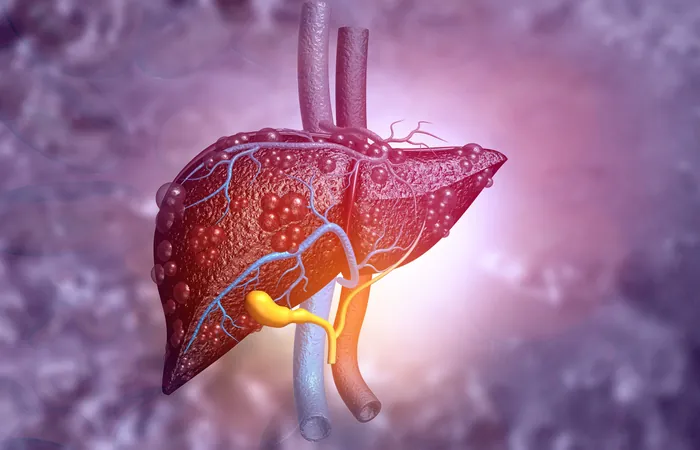
Breakthrough Discovery: Oxidized Apolipoproteins as an Early Biomarker for MASLD
2025-01-20
Author: Siti
Introduction
In a groundbreaking study published in *Liver International*, researchers have identified elevated levels of oxidized apolipoproteins in patients suffering from metabolic dysfunction-associated steatotic liver disease (MASLD), a condition that affects nearly 30% of the global population. This revelation marks a significant advancement in our understanding of MASLD, previously known as nonalcoholic fatty liver disease (NAFLD) until its rebranding in 2023.
Significance of the Findings
The findings indicate that these oxidized serum proteins could serve as transformative biomarkers, reshaping diagnostic panels and enhancing clinical insights into the metabolic anomalies associated with MASLD. The study underscores the complexities of diagnosing and treating this condition, which encompasses various histological characteristics, including the inflammatory progression known as steatohepatitis (MASH).
Challenges in Research
Traditionally, lipidomics and proteomics have been the primary tools for investigating the pathological mechanisms of MASLD. However, the researchers noted that serum mass spectrometry proteomics presents significant analytical challenges due to the concentration variability of circulating proteins, primarily because of the dominance of high-abundance proteins like albumin. To overcome this hurdle, the study employed a technique known as peptidomics, which uses organic, solvent-based precipitation to refine the analysis of serum samples. This method has shown promise in previous research, allowing for the removal of high concentrations of certain interfering proteins.
Research Methodology and Results
The research team conducted their study with the assistance of the NAFLD Service from Cambridge University Hospitals NHS Foundation Trust, recruiting eligible patients diagnosed with MASLD. A matched control group was sourced from the NIHR Cambridge BioResource and the NHS Blood and Transplant Unit, resulting in a total of 149 serum samples collected for analysis.
Through a meticulous examination of these samples, researchers identified 28 distinct protein expressions in patients with MASLD linked to lipoprotein and lipid metabolism (including APOA4, APOD, APOE, APOL1), immune response (notably C3 and IGKV3-11), and antioxidant activity (ALB, APOA4, HPR, APOE). Their Pearson correlation analysis revealed a strong relationship between these proteins and key health indicators such as body mass index (BMI), insulin resistance, and transaminase levels—factors significantly elevated in patients with MASLD.
Implications for Future Research
Remarkably, the study also highlighted that while they did not observe substantial proteomic differences across the MASLD spectrum, there was a clear indication that advances in the oxidation of specific apolipoproteins, particularly ApoC-III and ApoE, could serve as early indicators of MASLD, suggesting a critical metabolic link between apolipoprotein oxidation and systemic as well as hepatic dysfunction.
These findings have led researchers to urge further exploration into non-invasive biomarkers, which could enhance clinical understanding of MASLD and lead to improved diagnostic and therapeutic strategies.
Conclusion
In summary, the identification of oxidized apolipoproteins as potential early biomarkers for MASLD could revolutionize how this increasingly prevalent disease is diagnosed and managed. As research continues, medical professionals and patients alike may soon have more effective tools at their disposal to combat the challenges posed by this significant health issue. Stay tuned as we follow this developing story that could change the landscape of metabolic liver disease treatments!

 Brasil (PT)
Brasil (PT)
 Canada (EN)
Canada (EN)
 Chile (ES)
Chile (ES)
 Česko (CS)
Česko (CS)
 대한민국 (KO)
대한민국 (KO)
 España (ES)
España (ES)
 France (FR)
France (FR)
 Hong Kong (EN)
Hong Kong (EN)
 Italia (IT)
Italia (IT)
 日本 (JA)
日本 (JA)
 Magyarország (HU)
Magyarország (HU)
 Norge (NO)
Norge (NO)
 Polska (PL)
Polska (PL)
 Schweiz (DE)
Schweiz (DE)
 Singapore (EN)
Singapore (EN)
 Sverige (SV)
Sverige (SV)
 Suomi (FI)
Suomi (FI)
 Türkiye (TR)
Türkiye (TR)
 الإمارات العربية المتحدة (AR)
الإمارات العربية المتحدة (AR)